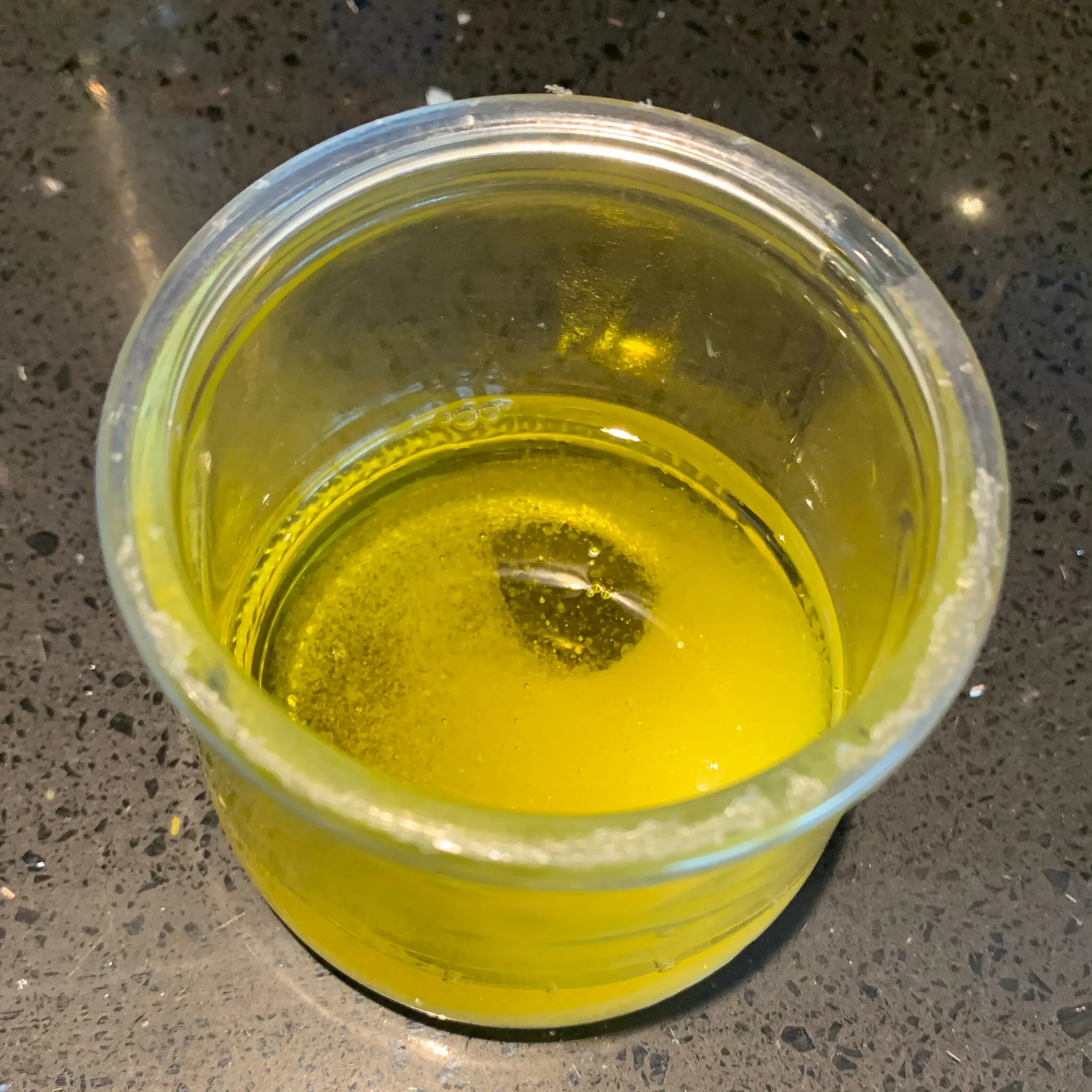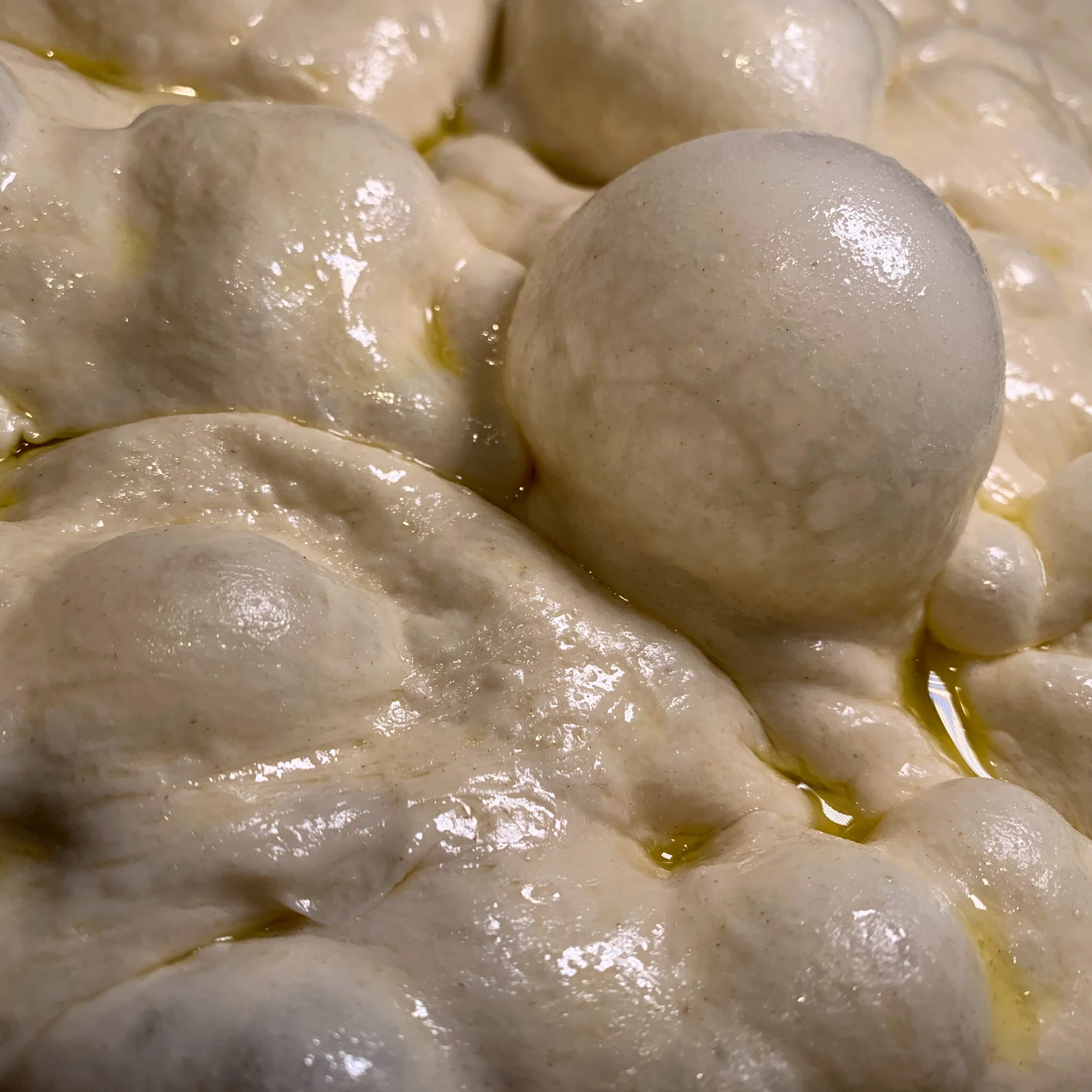Sourdough Focaccia
Everyone loves focaccia!
I had to open with a bold statement.
It’s been so interesting to see how this delicious oily bread has slowly conquered everyone’s hearts. Being half Italian I grew up eating all sorts of focaccia but it wasn’t until I moved to London 6 years ago that I discovered everyone’s obsession with it.
In Italy, each region has a slightly different versions. The queen of focaccia comes from genova (fügassa) but there are so many other versions that are slightly different but still delicious. Sometimes it’s called it pizza bianca, schiaccia, schiacciatina, spianata, focaccia in pala and many other names I don’t even think I know.
One of my favourites is Focaccia Barese which originates in Puglia and the dough is made with flour and mashed potatoes. It’s the fluffiest focaccia ever and that’s not all: it’s topped with delicious cherry tomatoes and drowned in olive oil. If you ever go to Bari make sure you taste some and try to aim for a corner slice as that is were all the goodness is concentrated. I am talking big crunchy oily corners.
Another one I absolutely love is Focaccia di Recco. This is an extremely thin unleavened focaccia stuffed with either crescenza or stracchino cheese. If you google it you’ll see it has a very unassuming look as it’s barely 1 cm tall and if you hold a slice in your hand it’s normally a bit floppy. All I have to say is that you must try it at least once in your lifetime. A few years back I found a bakery close to my old office in Milan and I ate focaccia di Recco every day for lunch for six months: this is how good it is!
This focaccia recipe is a bit of a hybrid and I think that probably my friends in Italy won’t fully be happy about it because it’s too big and too bubbly. This focaccia is a bit bready and full of good olive oil like focaccia genovese but it’s also nice and bubbly like a focaccia in pala from Rome (which is a bubbly but NON oily delicious focaccia).
You can follow this recipe if you already have a sourdough starter as I am not going to explain the process of making one from scratch. This is not because I don’t want to but because i believe there are other people more qualified than me in explaining how to do this!
Ingredients
For the levain
15g sourdough starter
60g strong bread flour
60g water
For the focaccia
120g levain
450g of water
15g of salt
30g of extra virgin olive oil (the best you can get!)
450g strong bread flour
150g double milled durum wheat semolina (same flour you use for eggless pasta such as orecchiette)
+More extra virgin olive oil for the baking tin (no need for a number, we can eyeball this one)
Maldon Salt and Rosemary as a topping
Step by Step
10.00pm
Mix your levain ingredients in a bowl and cover it with clingfilm
Let it rest overnight in a warm place
8.00am next morning
In a bowl add the water with 120g of levain. Your levain should float on the water. Use your hand to dissolve the levain in the water
Now add the flour and the semolina and mix. It’s going to look ugly and sticky but that’s normal. Keep going for a few minutes (roughly 4-5 minutes)
In a glass pour the 30g of olive oil and add in the salt and mix until is dissolved
Pour the olive oil and salt mix on your dough and knead until it’s completely absorbed. the dough should still look rough but not shiny form the oil
8.30 to 10.30am
Every 30 minutes perform a coil fold for a total of 4 times. The aim is to strengthen your dough and to develop the gluten. 4 is an indicative number that works for me in my kitchen. 3 folds might be enough or you might need 5. You will know when it’s ready as the dough will appear glossy, beautiful and it will hold its post fold shape proudly. A coil fold is a very simple fold that works well when you are working with high hydration doughs. Wet your hands with some water and gently put them under the middle of your dough lifting it up and then folding it back back down. You can see the picture below. If it’s not clear I suggest you quickly check it out on YT (where would we all be without YT?)
10.30 to 12.30pm
Prepare a deep baking tin (mine is 33cmX25cm) and line the bottom with parchment paper
Drown the tin in good extra virgin olive oil. You have to pour an uncomfortably massive olive oil quantity that should cover most of the tin (see picture below)
Place your dough in the middle of the tin and very gently stretch it with your hands. Don’t force it too much as you spent the past two hours building strength and it’s expected that your dough will initially resist. You also have to be careful as you don’t want to degas it. Now cover it with cling film and let it rest
In the next couple of hours come back to your baking tin every 45 minutes roughly and repeat the very gentle stretch motion. Repeat this until your focaccia covers the whole tin . Always be gentle and don’t force the stretch
12.30 to 4.30pm
Cover your focaccia with cling film and put it to sleep for 4h in a warm place. Completely forget about it for 4h
4.30 pm
Preheat the oven at 240 static
Time to make the bubbles pop out! Pour a small quantity of olive oil on your hands and with your fingers very gently press the surface of the dough with very light pressure (you don’t want the bubbles to burst!). You will slowly see the bubbles emerging on the surface. It’s such a beautiful thing
When you are satisfied with the bubbles, drizzle some more olive oil, sprinkle some maldon flakes and if you wish add some rosemary too
Bake for 20 min at 240C and then lover the temperature at 200C for another 20 mins roughly. If your bubbles are big and start getting too brown, when you lower the temperature of the oven lower also your baking tray
Let the beast cool down and enjoy!
















